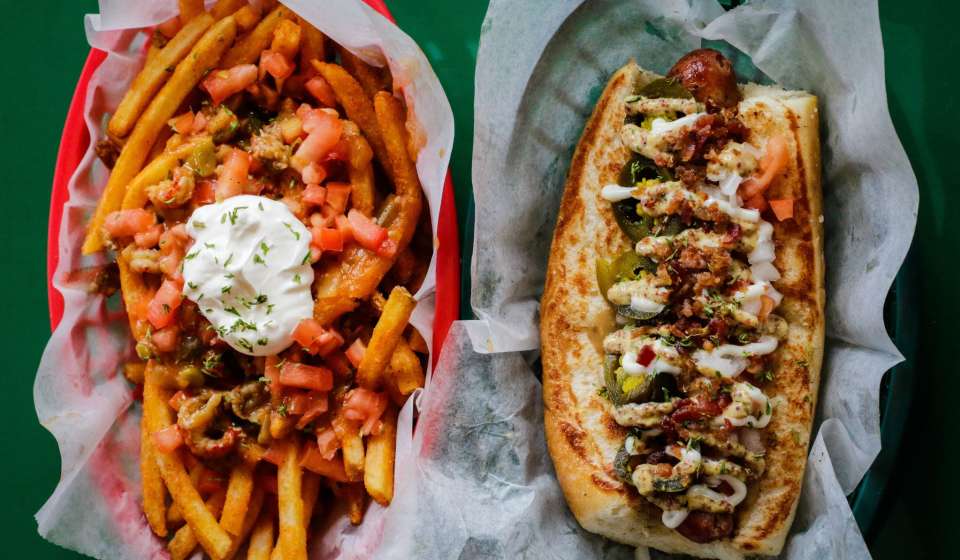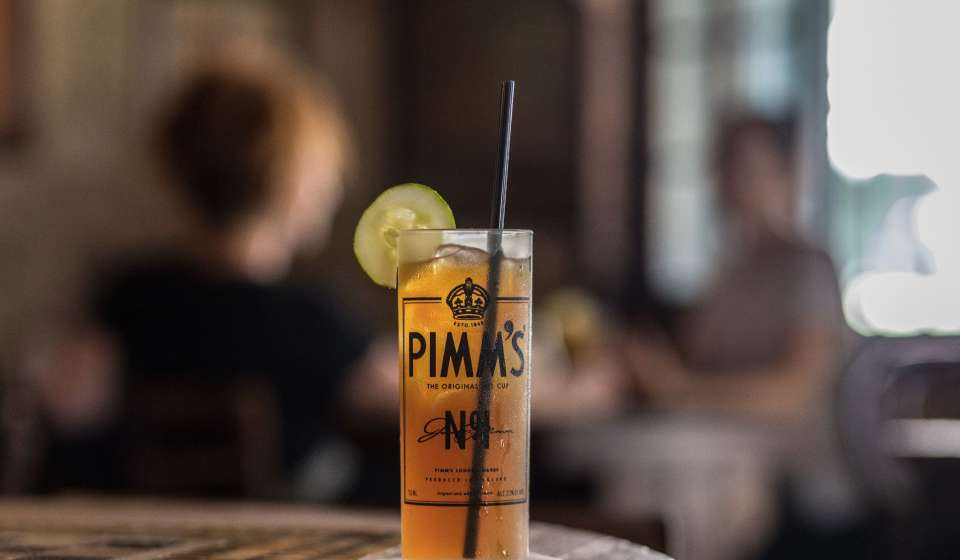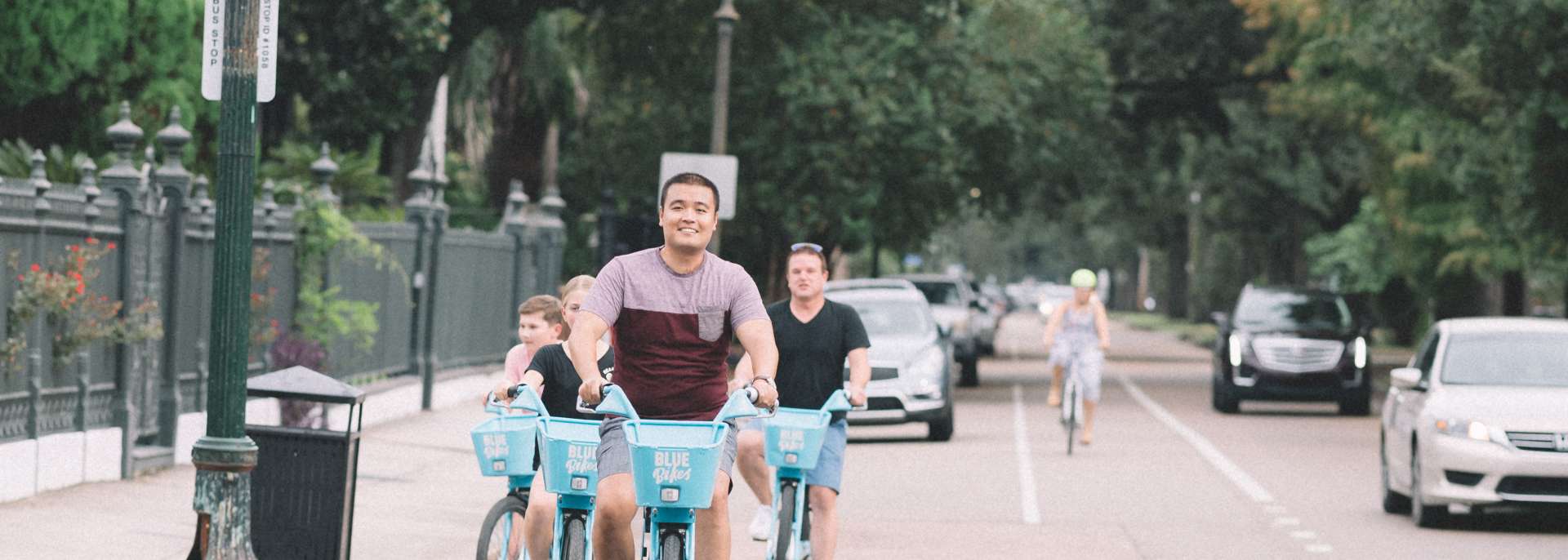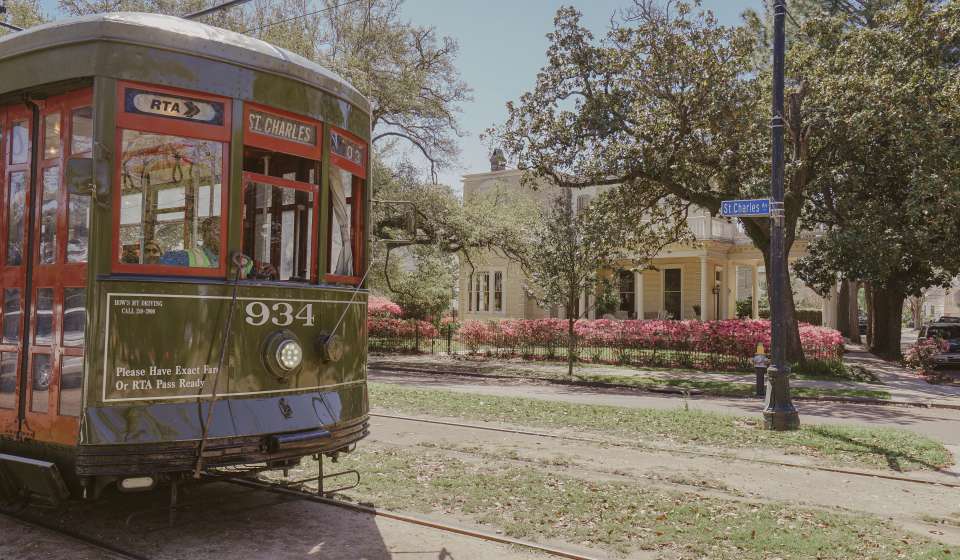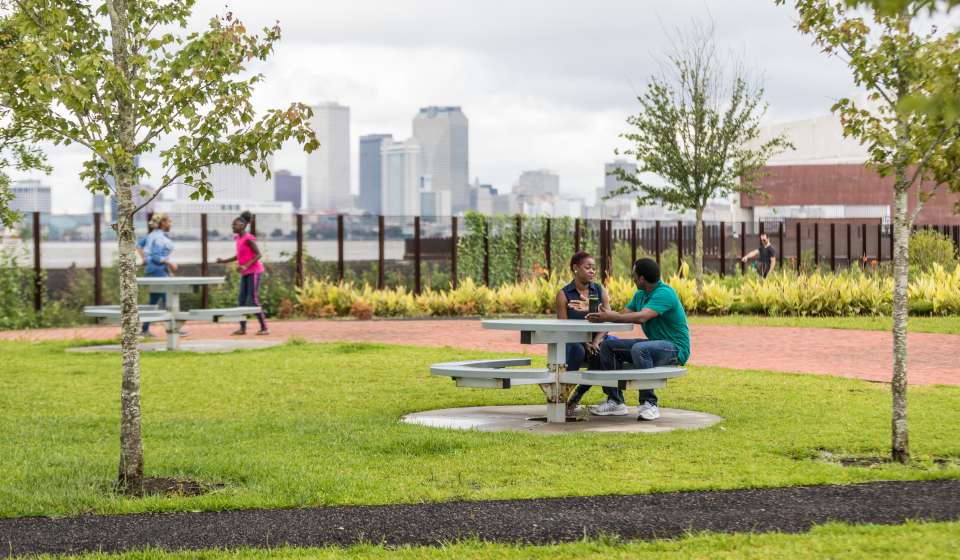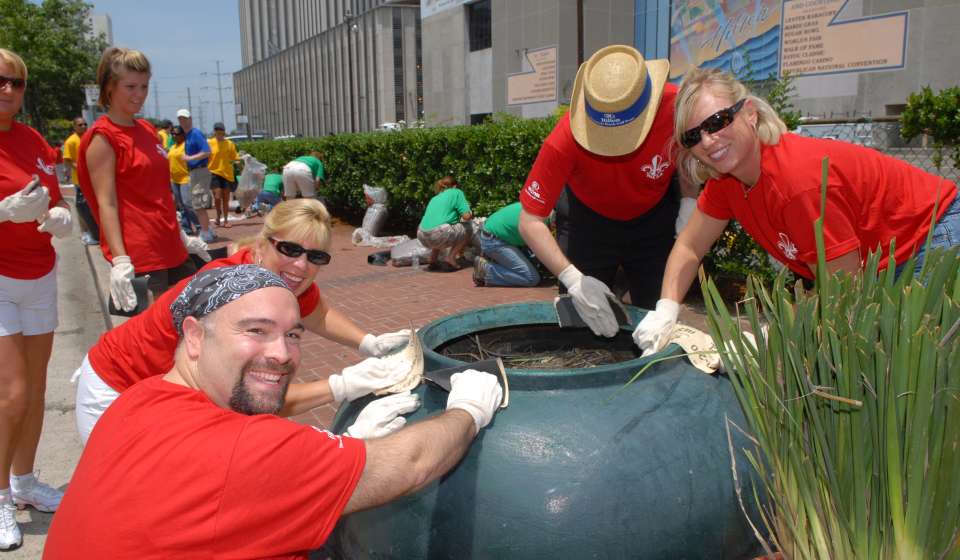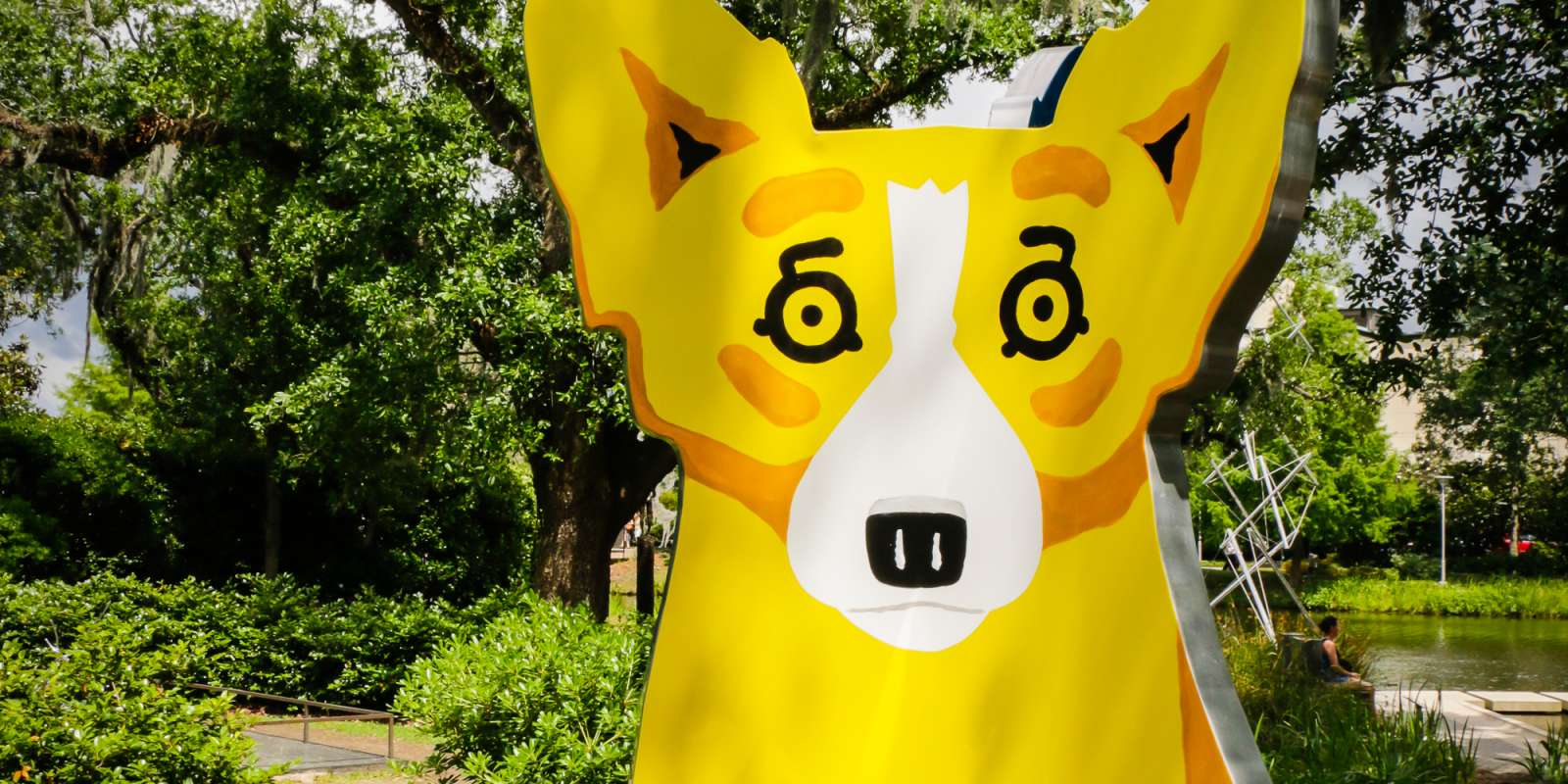With great travel comes great responsibility and reducing your carbon footprint should be top of mind when visiting any city. Luckily, there are several easy ways to practice sustainability when visiting New Orleans, whether you choose to stay in an eco-friendly hotel or utilize public transportation. If you’re trying to be mindful about helping the communities you visit, here are some ways you can make sure you’re traveling more sustainably.
Stay at an Eco-Friendly Hotel
Many New Orleans hotels have environmentally friendly practices to aid travelers in reducing their carbon footprint. Examples include soap, shampoo, and conditioner dispensers in lieu of single-use plastic bottles, in-room recycling bins, and composting food waste. You can do your part by hitting the lights off when you leave your room or reusing towels instead of requesting housekeeping every day. Browse our list of eco-friendly hotels here and give the hotels a call for specific details.
Find Alternative or Eco-friendly Transportation
There are plenty of ways to explore New Orleans outside of renting or calling a car. The city’s flat geography lends itself to the easiest biking around. See the city in a new way on a bike tour or grab a Blue Bike if you want to strike out on your own.
And of course, you can’t forget the streetcar, one of the most leisurely ways to get around town. Hop on the St. Charles line to head towards Audubon Park, taking in the beauty of the Garden District on the way, or take the streetcar along Canal Street to see all there is to do at City Park. The RTA bus system is another option for public transportation, and Le Pass makes it easy to book a bus, streetcar, or ferry ticket via your phone.
Driving an electric car in New Orleans? Worry not! There are plenty of places to plug in and power up all around the city. Use the handy ChargeHub interactive map to search EV charging stations nearby, and you'll be back up and running in no time.
Support Local Businesses
Supporting the local economy is a great way to invest in where you’re visiting – it also guarantees you the best souvenirs. Stroll along Magazine Street to start the search for local stores, like Vintage Green Review, the city’s first zero-waste, bulk refill shop. You can also find other gems all over the city. You can also explore Black-owned and multicultural and LGBTQ-owned business guides. And if you ran out of room in your bag but wanted to bring the look of New Orleans home to display on your walls, Where Y’Art is a great resource to discover, shop, and experience the best of New Orleans art online. Find more shopping here.
Tip The Musicians
Everywhere you go seems to have music floating in the air. While enjoying the ambiance is a wonderful element of exploring New Orleans’ streets, taking the time to support the artists who make it possible is a great way of supporting the culture. Whether on the street or in a bar, standard practice, according to the Music & Culture Coalition of New Orleans, is to offer $5 per person in your party per set if there's no cover charge at the venue you visit and to drop at least $1 in a tip bucket for street musicians. Check out their full Good Visitor’s Guide to New Orleans to learn more.
Eat With A Purpose
Not only is the food in New Orleans overwhelmingly delicious, eating like a local allows for a more authentic experience. The city’s reputation for phenomenal food is easily understood by your first meal here. If you want to find a way to do more, check out a restaurant that participates in the oyster shell recycling program with the Coalition to Restore Coastal Louisiana.
Whether you eat them fried, char-grilled, or on the half shell, after you dine on some delicious oysters, the shells at these participating restaurants are collected and returned to the coast, where they help restore coastal reefs, create fish habitats, and stabilize the coastline. Find the full list of participating restaurants here.
Additionally, on the subject of seafood, those looking to take a more active role in their meals can check out the state’s Catch and Cook program. Participating restaurants will allow diners to fish our local waters, and then bring their catch to the restaurant to be prepared and eaten. Participating requires advance notice and coordination, but it’s a great way to enjoy the region’s excellent fishing in a more sustainable way. Click here for more information on the program.
You can also visit a local farm to get the freshest options. Paradigm Gardens has a variety of events, including goat yoga and a variety of dinner series. Sugar Roots Farm, Grow Dat Youth Farm, Sankofa Fresh Stop Market, and Sprout all have programming to connect you to the local ecology.
Learn About The Unique Challenges Facing The Gulf Coast Region
Did you know that Louisiana loses a football field worth of land each hour and a half? Coastal erosion is impacting countries around the world, but due to the mix of subsidence, reduced sediment flow from the Mississippi River, and sea-level rise, Louisiana is at the forefront of the conversation on how to reduce the loss of wetlands.
Take a tour with a company like Lost Land Tours and The Great Delta Tours to visit the river delta and learn more about restoration efforts along the coast.
Water, Water Everywhere
In 2006, New Orleans partnered with Amsterdam to learn ways to better live with water. This initiative, called the Dutch Dialogues, led directly to the Greater New Orleans Urban Water Plan, “Living with Water”. For a city that averages 64” of rain each year, stormwater management and climate adaptation are crucial.
An impactful result of the Urban Water Plan was New Orleans’ Comprehensive Zoning Ordinance, adopted in 2015, which requires any project with a footprint of over 5,000 SF to capture, filter, infiltrate, or store the first 1.25” of stormwater.
Visit Sazerac House, where this element of construction is easily seen and enthusiastically promoted. With all types of buildings in New Orleans being constructed and renovated, look around to see the ways that water is incorporated. You’ll notice more bioswales and water cisterns that are helping to capture much of the rain that keeps our region full of lush plant life. You can also visit the multiple green infrastructure projects currently underway throughout the city here.
Save Your Glass, Drop It Off
New Orleans’ culture of drinking doesn’t have to result in tons of waste. When possible, choose glass bottles to save for recycling. Glass Half Full collects glass and turns it into sand products ranging from super soft, beach-like sand to glass gravel. The final products are used for coastal restoration projects, disaster relief efforts, eco-construction, new glass products, and so much more. Free drop off is collected at their New Orleans East facility (3935 Louisa St.), but businesses including Barrel Proof, Snake & Jakes, and Faubourg Wines also have blue bins for glass pickup.
Stay A Few Days For Some Volunteer Work
For many years, New Orleans has been a hub of volunteer activity. A wide variety of local non-profits are always looking for some hands-on support and are happy to bring visitors in for a day or two of work. Our Corporate Social Responsibility page can connect you with a variety of opportunities to give back.
For more information on sustainable and eco-friendly facilities, transportation & practices in New Orleans, check out our main Sustainability page here.

